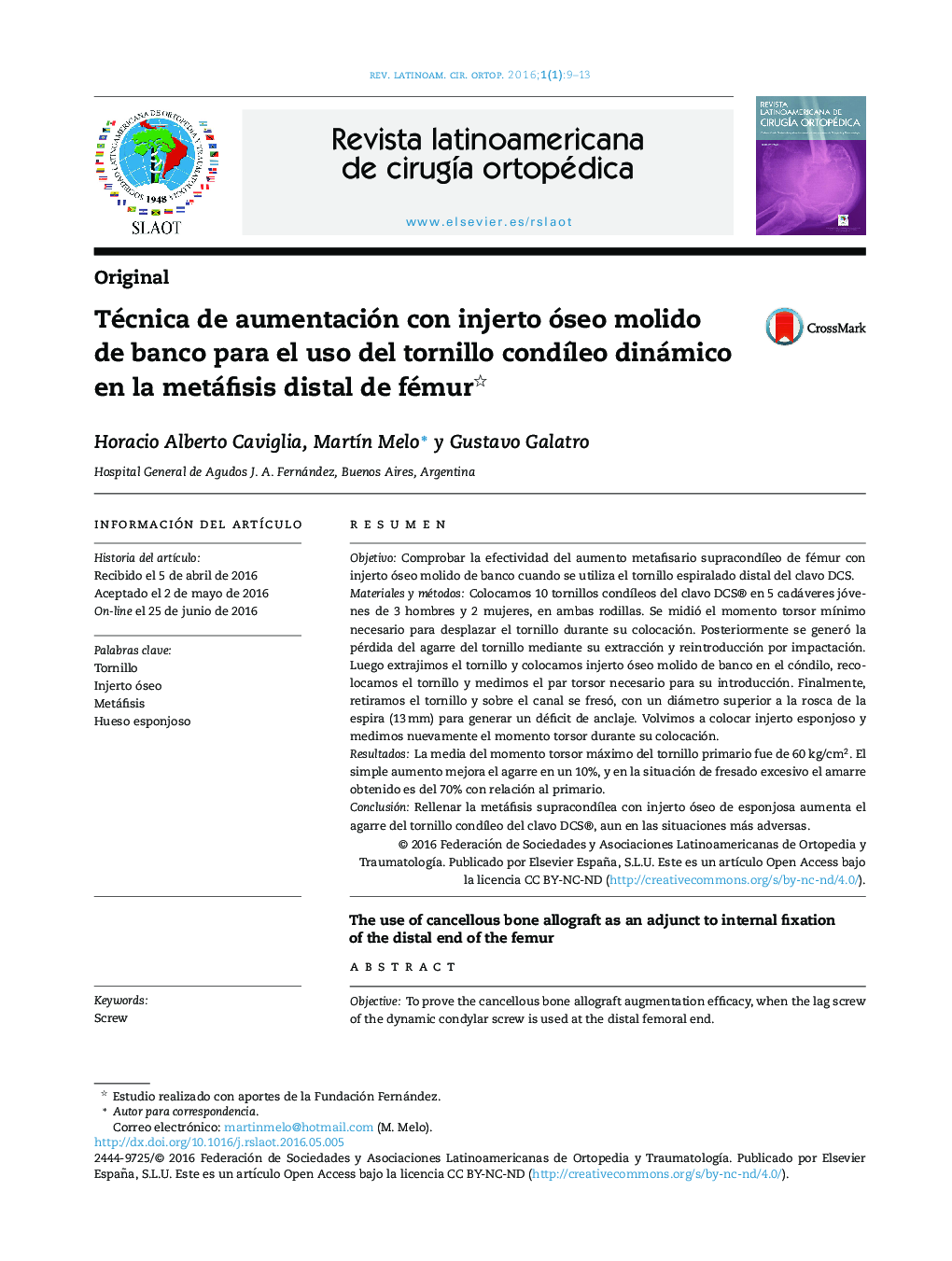| Article ID | Journal | Published Year | Pages | File Type |
|---|---|---|---|---|
| 4087935 | Revista Latinoamericana de Cirugía Ortopédica | 2016 | 5 Pages |
ResumenObjetivoComprobar la efectividad del aumento metafisario supracondíleo de fémur con injerto óseo molido de banco cuando se utiliza el tornillo espiralado distal del clavo DCS.Materiales y métodosColocamos 10 tornillos condíleos del clavo DCS® en 5 cadáveres jóvenes de 3 hombres y 2 mujeres, en ambas rodillas. Se midió el momento torsor mínimo necesario para desplazar el tornillo durante su colocación. Posteriormente se generó la pérdida del agarre del tornillo mediante su extracción y reintroducción por impactación. Luego extrajimos el tornillo y colocamos injerto óseo molido de banco en el cóndilo, recolocamos el tornillo y medimos el par torsor necesario para su introducción. Finalmente, retiramos el tornillo y sobre el canal se fresó, con un diámetro superior a la rosca de la espira (13 mm) para generar un déficit de anclaje. Volvimos a colocar injerto esponjoso y medimos nuevamente el momento torsor durante su colocación.ResultadosLa media del momento torsor máximo del tornillo primario fue de 60 kg/cm2. El simple aumento mejora el agarre en un 10%, y en la situación de fresado excesivo el amarre obtenido es del 70% con relación al primario.ConclusiónRellenar la metáfisis supracondílea con injerto óseo de esponjosa aumenta el agarre del tornillo condíleo del clavo DCS®, aun en las situaciones más adversas.
ObjectiveTo prove the cancellous bone allograft augmentation efficacy, when the lag screw of the dynamic condylar screw is used at the distal femoral end.Materials and methodsTen knees of 5 cadaveric models were used to implant the dynamic condylar lag screw; the torque of the screw was quantified during the implantation. Then we proceed to generate a lack of fixation based on an axial compression implantation of the lag screw. The screw was removed and the augmentation technique with cancellous bone allograft performed, then we measure again the torque needed on the lag screw implantation. We proceed on the same way after generate a total loose of fixation based on an excessive reaim with a 13 mm reamer.ResultsThe final maximum torque average at the primary screw implantation was 60 kg/cm2. This augmentation technique improved the fixation in 10% roughly when it was used on the second implantation, and when we generate a worst situation based on an excessive reaim, the fixation obtained was 70% of the primary screw fixation force.ConclusionThe cancellous bone allograft augmentation is a biological technique that demonstrated an improvement on the lag screw fixation, even in the worst bone structural deficit situations.
